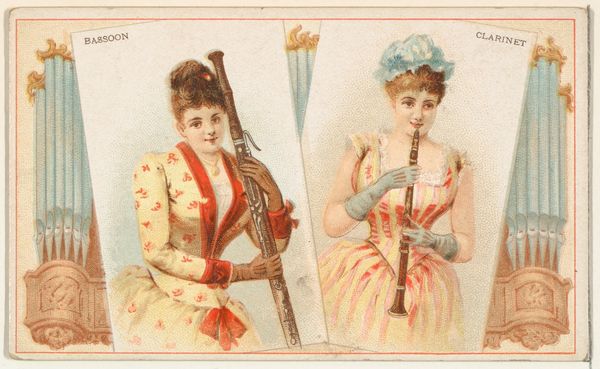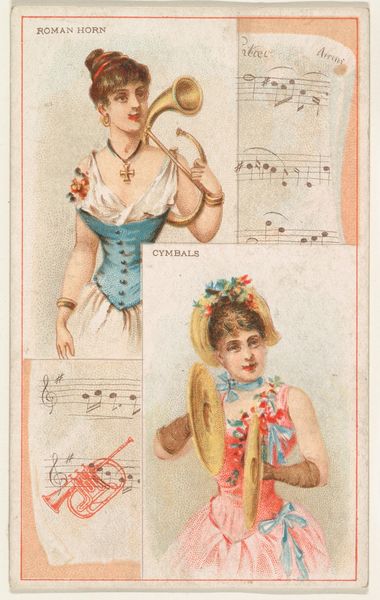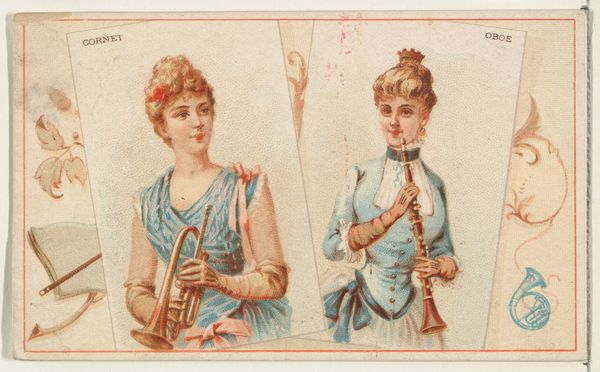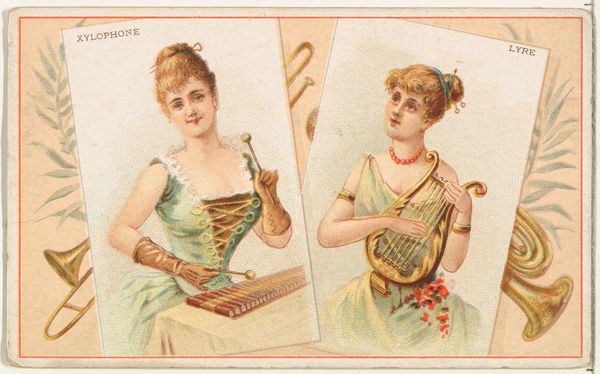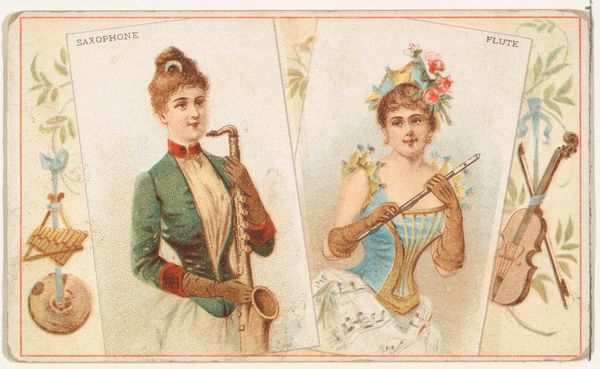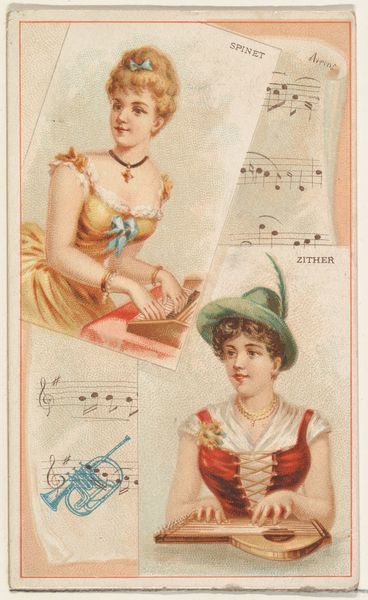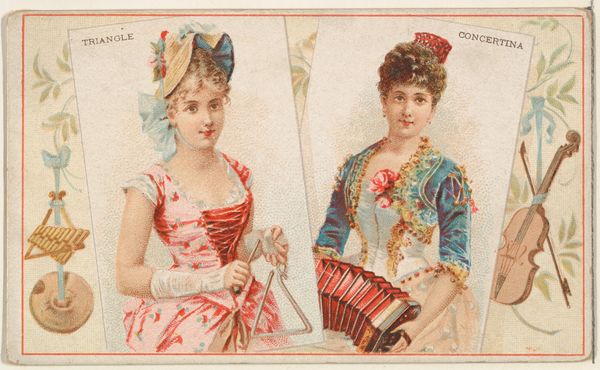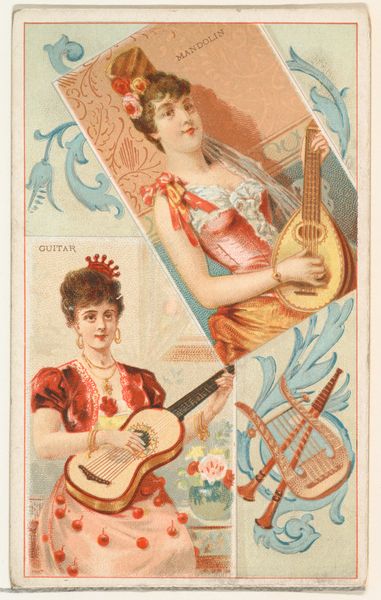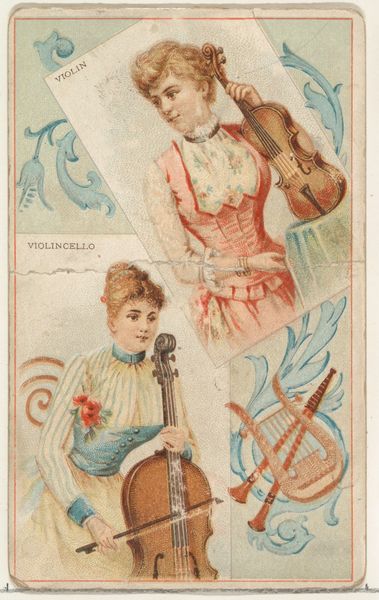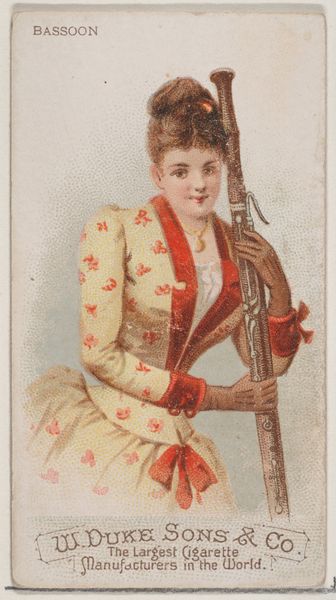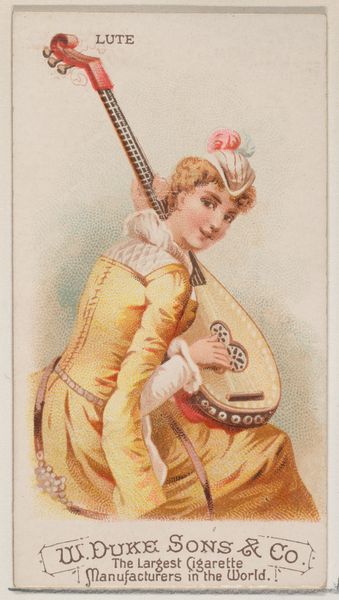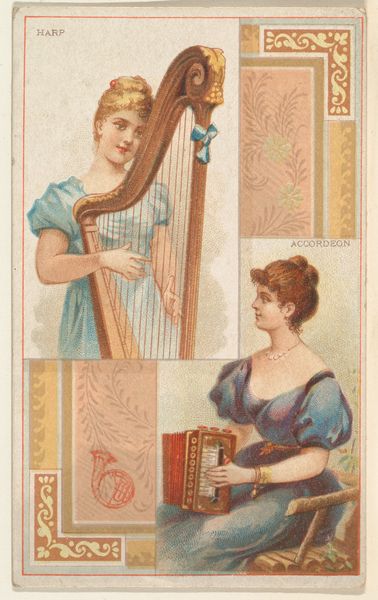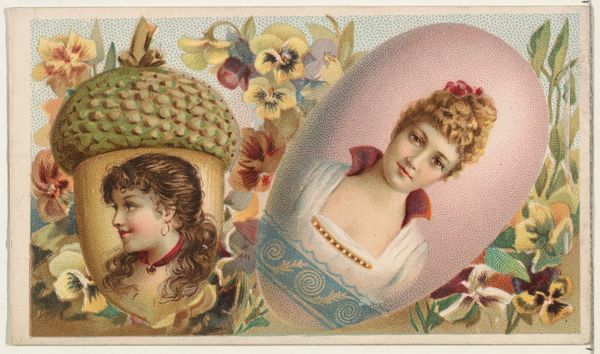
Lute and Bass Viol, from the Musical Instruments series (N121) issued by Duke Sons & Co. to promote Honest Long Cut Tobacco 1888
0:00
0:00
drawing, coloured-pencil, print, poster
#
portrait
#
drawing
#
coloured-pencil
#
water colours
# print
#
coloured pencil
#
genre-painting
#
poster
Dimensions: Sheet: 2 1/2 × 4 1/16 in. (6.4 × 10.3 cm)
Copyright: Public Domain
Curator: What strikes me first about this chromolithograph from 1888 is how it portrays women in a seemingly elevated, performative light, yet it functioned as a mere tobacco advertisement for Duke Sons & Co. Editor: The immediate impression is the balanced symmetry and almost dreamlike, faded quality of the color palette. It is primarily an image concerned with composition and complementary forms. Curator: Precisely, but the historical context complicates this purely formal reading. This belongs to a series, N121, which featured instruments, situating these women—and music itself—as commodities to move tobacco. These images would have circulated widely, shaping cultural attitudes towards women. The fact that both women appear to be of European descent underscores the lack of diverse representation. Editor: I can’t deny the implications you raise, however, I'm drawn to how the pastel shades enhance the textures of their dresses. Note also the calculated arrangement of the musical instruments; the angle of the lute cleverly mirroring the shape of the bass viol. Curator: The class implications of the era are vital too. Middle and upper-class women's roles were often confined to artistic expression, so the image subtly reinforces existing power structures and notions of gendered labor. These women, styled in elegant garb, reinforce the aspirational appeal linked to the product. Editor: While I am aware of your perspective, consider the detail given to the instruments themselves: the precise curves of the lute, the carefully rendered strings. Even the decorative elements are well considered: each character poses in front of an enormous organ. These details speak of the symbolic language the piece employs. Curator: Absolutely, symbolism deeply entrenched within its historical framework. Consider the power dynamics implicit in associating feminine artistry with consumption during the rise of consumer culture. Editor: Food for thought. Although the print seems at first glance purely aesthetic, analyzing both the artistry and its context offers a deeper comprehension. Curator: Yes, through combined interpretations we gain more appreciation for how artwork, even commercial art like this, represents both the visual language and its embedded social and cultural ideas.
Comments
No comments
Be the first to comment and join the conversation on the ultimate creative platform.
